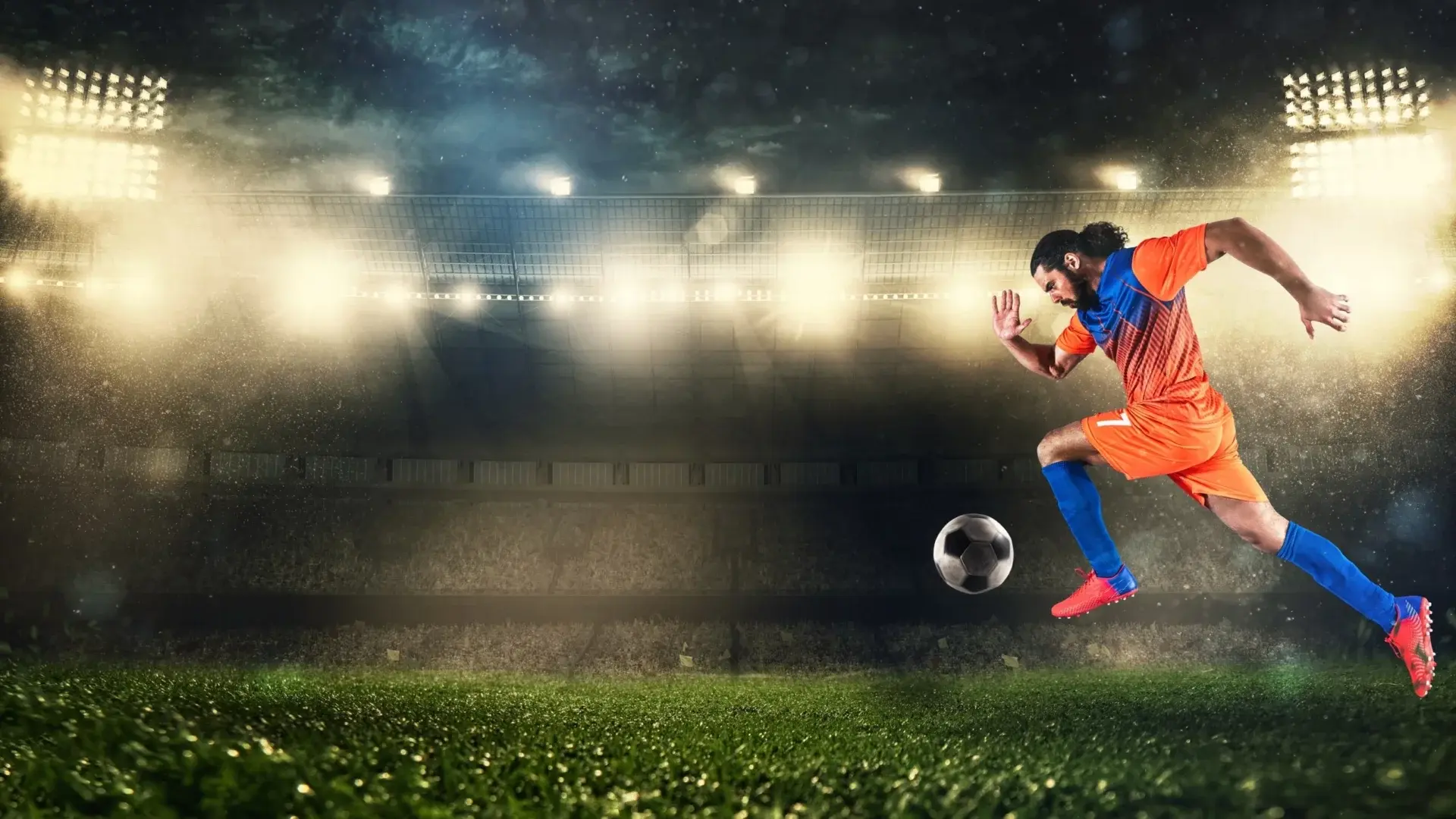Speed training in football (soccer): how coaches and athletes can develop this difference-maker
Speed is as critical to performance as technical and tactical mastery, as well as strength and conditioning. Here’s how to develop it to blow your opponents away on the pitch.
-
Speed training in football is as critical to performance as technical and tactical mastery, as well as strength and conditioning.
-
There are many components of speed which athletes can develop – linear, multidirectional, deceleration, acceleration, change of direction and agility, and top speed.
-
In order to achieve the right adaptations for speed improvements, coaches should supplement their drills with power-based strength and conditioning exercises.

Speed training in football: Why it’s crucial
Speed is one of the most vital dimensions of sports performance. Defined as the rate at which someone moves, speed is as critical to performance as technical and tactical mastery as well as strength and conditioning.
Without effective levels of speed, athletes can struggle to compete, so it is vital coaches and athletes focus on developing this aspect of sports performance.
“There are many components of speed which athletes can work on to improve their speed – linear, multidirectional, deceleration, acceleration, change of direction and agility, and top speed,” said leading strength and conditioning coach Andy Hyde during his Science for Sport presentation titled ‘Game Speed in Football’.
Components of speed
Linear
Linear speed efforts often happen while athletes are already in motion. In football, linear runs do not often exceed 20m and “45% of goal scoring scenarios are preceded by a linear sprint,” said Hyde.
Linear speed is measured by straight-line distance over a period of time.
“Elite football players average 17m per sprint, with forwards, wingers, and fullbacks performing more linear sprints compared to centre midfielders and centre-backs,” explained Hyde.
“To get started, wall drills are a great way to ensure athletes develop the right technique. Athletes should drive their knees forward with force and extend fully at the hip.”
Once the proper technique is adopted, shuttle runs can be included to work on linear acceleration to develop overall speed.
Multidirectional
True change of direction speed in invasion sports is rare – 77% of change of direction in football games are at an angle of less than 90°. Multidirectional speed is associated with curved angled sprints.
“Athletes who are faster in acceleration usually have greater entry velocities into change of directions, which can result in slower exit velocities. Therefore, it is important for coaches to develop athletes’ eccentric strength, eccentric rate of force, deceleration tasks, and efficient technique,” said Hyde.
To develop multidirectional speed, coaches can set up sprints that involve various changes of direction – cones and poles are helpful in forcing athletes to change direction.
Deceleration
Deceleration efforts are highly intense and should be managed and progressed carefully. According to research, high-intensity decelerations occur more often than high-intensity accelerations in field sports.
“Deceleration can be a very damaging skill and can lead to injuries if performed with incorrect technique. When in-season, be very careful when training deceleration skill development since athletes are exposed to lots of those movements during games,” explained Hyde.
YouTube is a great platform to create a needs analysis for your athletes and contains a wealth of content from elite athletes who demonstrate best practice (hips behind the feet to create breaking force), said the leading strength and conditioning coach.
Top speed
In games, athletes rarely reach their top speed – research shows athletes reach on average 92% of their top speed.
“Despite not reaching top speed, athletes engage in frequent but brief exposures towards 85-95% of maximum velocity. The goal here is to ‘bulletproof’ athletes’ hamstrings,” said Hyde.
“Coaches shouldn’t focus too much time on top speed mechanics drills, instead they should incorporate drills in the context of game-specific movements in which acceleration and decelerations are common.”
Four progressions to improve speed
Each progression should last for four weeks to enable athletes to adapt to the drills, new stimuli thrown at them, and overload safely.
“Exercises and skill progressions should be the focus, not sets and reps. In order to achieve the right adaptations for improved speed, coaches should supplement their drills with power-based strength and conditioning exercises,” said Hyde.
Progression 1
- Skill – Lateral shuffle
- Drill – Lateral mirror shuffle
- Power – Skater hop & land
- Strength A1 – Cossak Squat
- Strength A2 – Single-leg Romanian deadlift
- Core – Kneeling palloff hold
Progression 2
- Skill – Lateral shuffle
- Drill – Lateral mirror shuffle against opponent
- Power – Loaded skater hop & land
- Strength A1 – Lateral lunge
- Strength A2 – Single-leg Romanian deadlift
- Core – Standing palloff hold
Progression 3
- Skill – Lateral shuffle
- Drill – Lateral mirror shuffle with shot/block (sport-specific movement)
- Power – Reactive skater hop & land
- Strength A1 – Lateral lunge drop
- Strength A2 – Single-leg Romanian deadlift
- Core – Standing palloff hold & twist
Progression 4
- Skill – 65° cut
- Drill – Bib bulldog
- Power – Lateral hop & land
- Strength A1 – Lateral lunge push
- Strength A2 – Single-leg Romanian deadlift
- Core – Kettlebell pull-through




